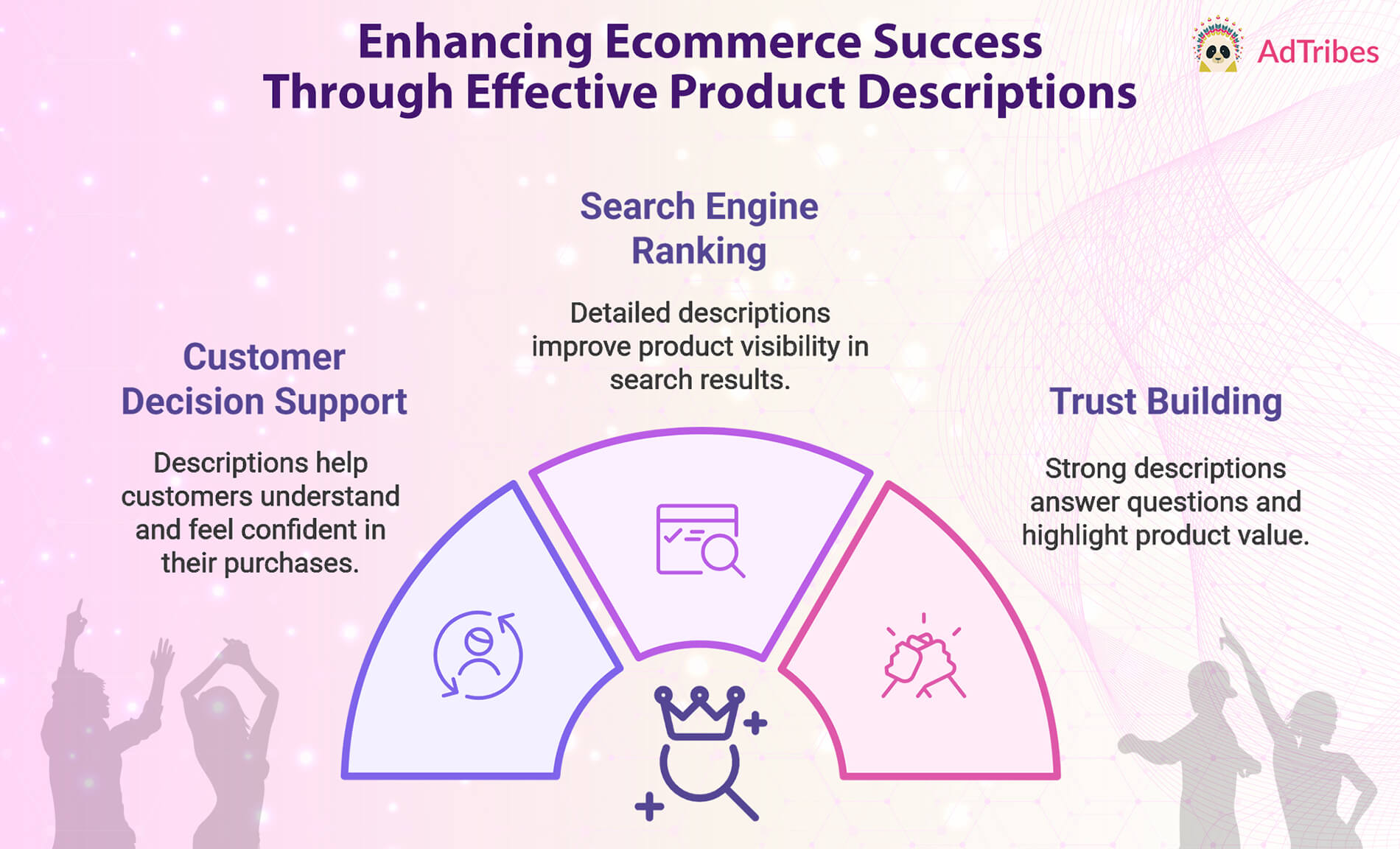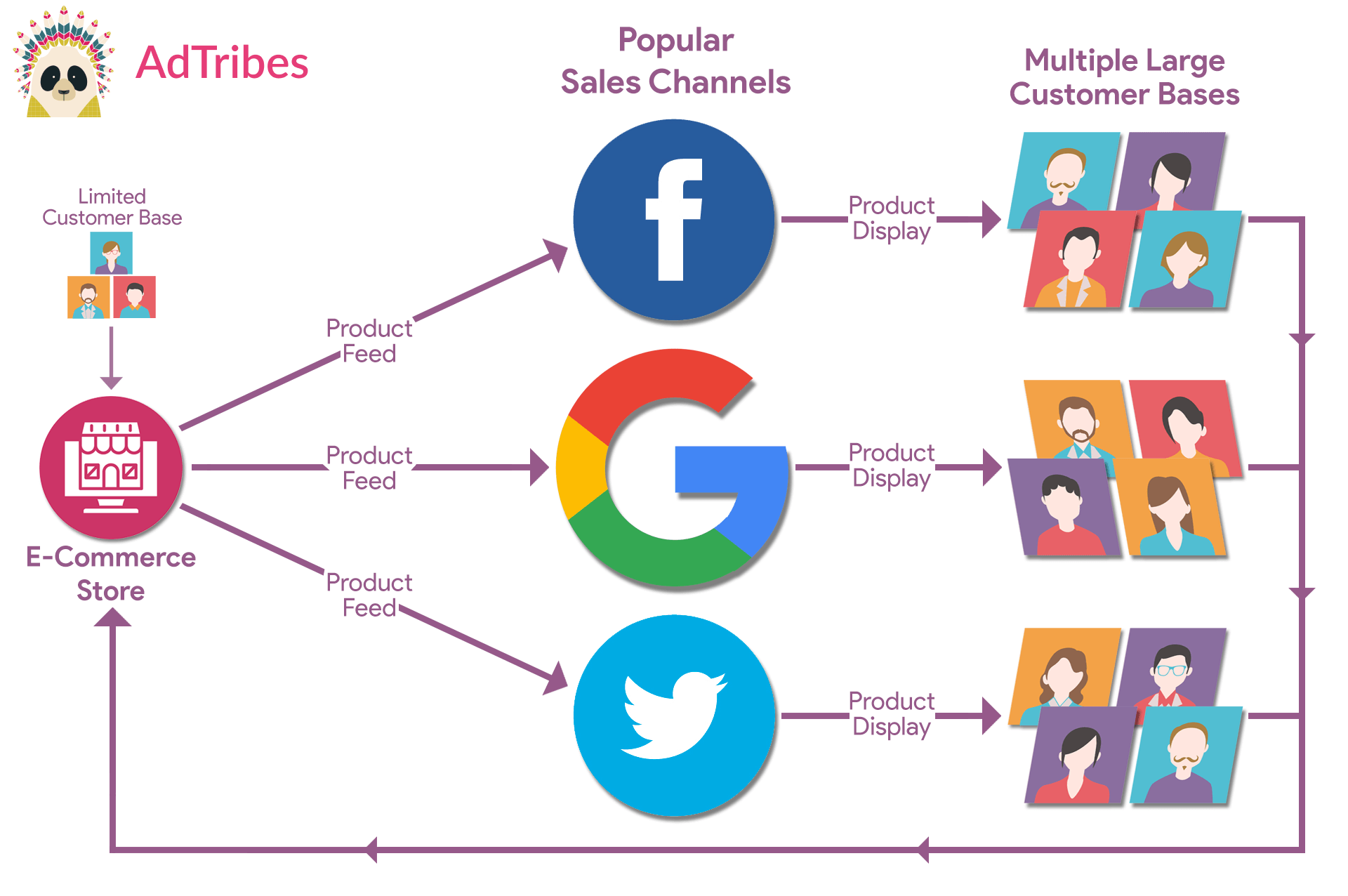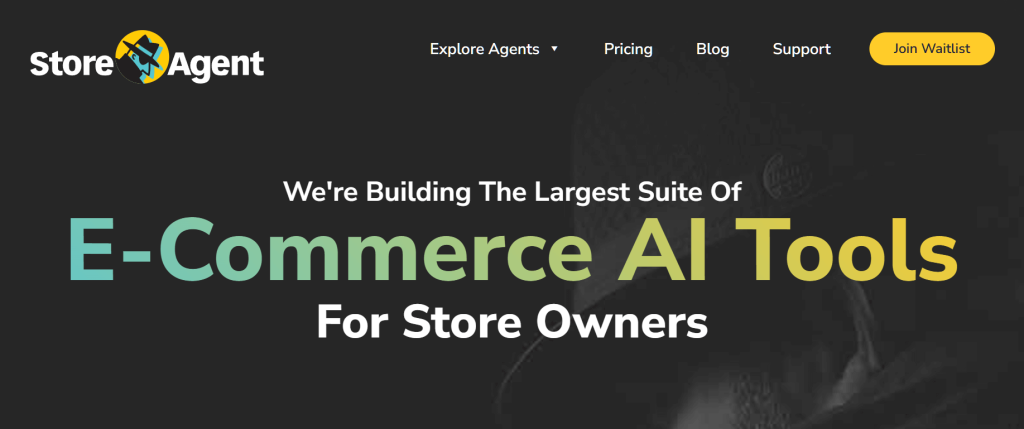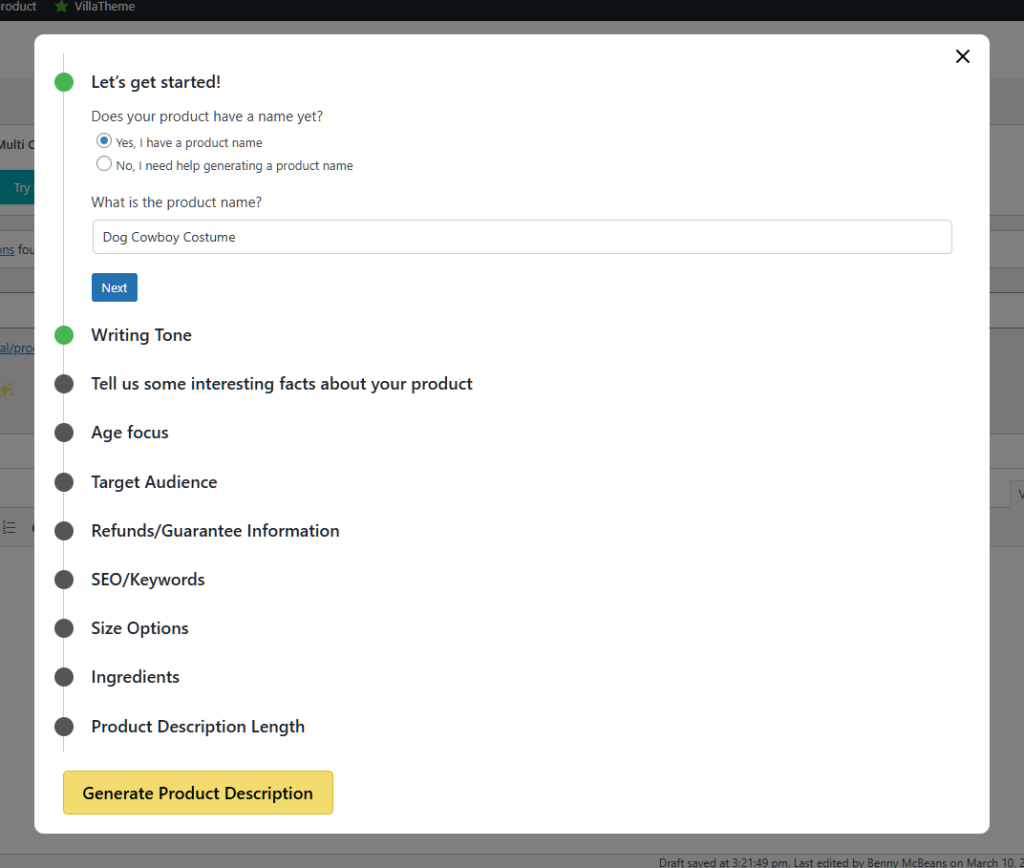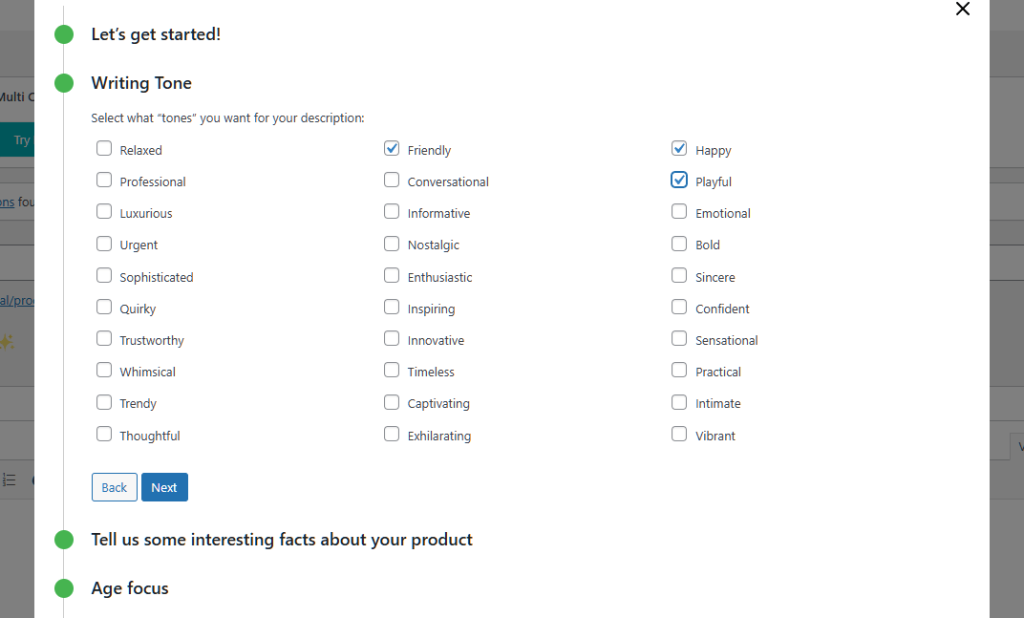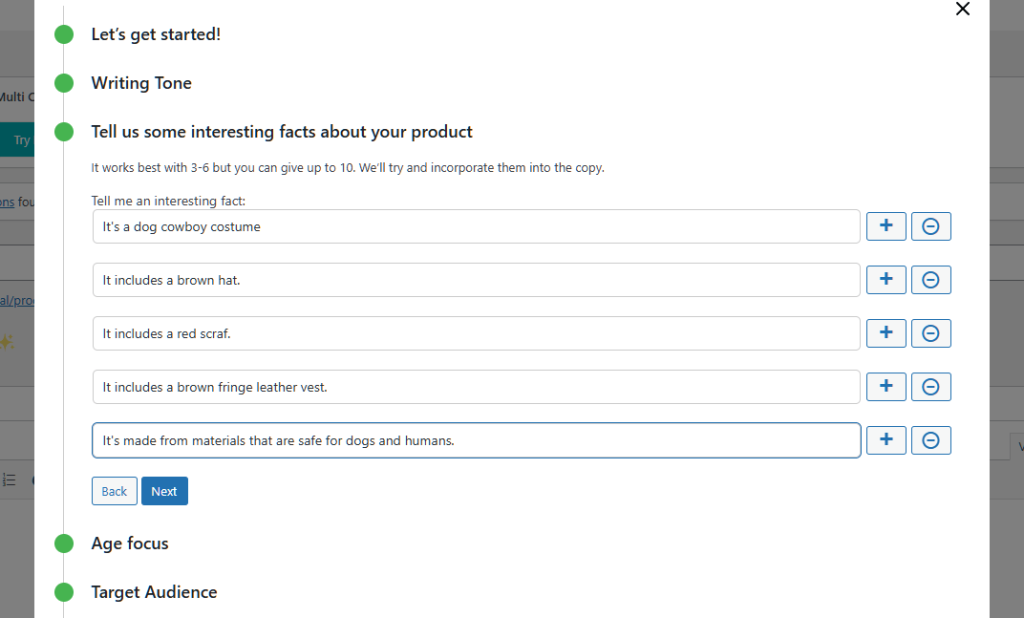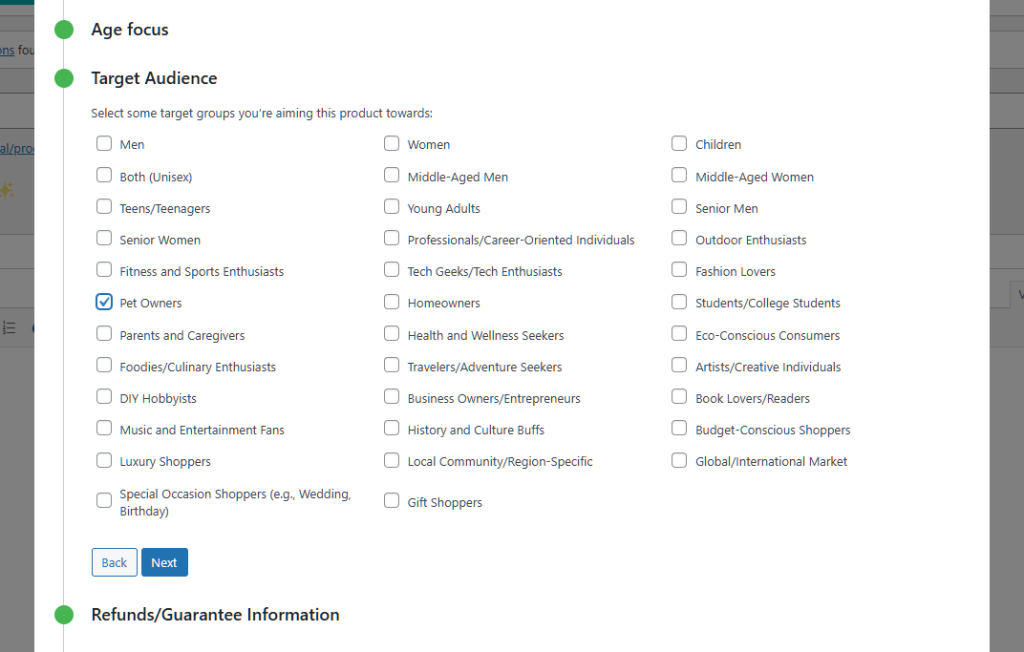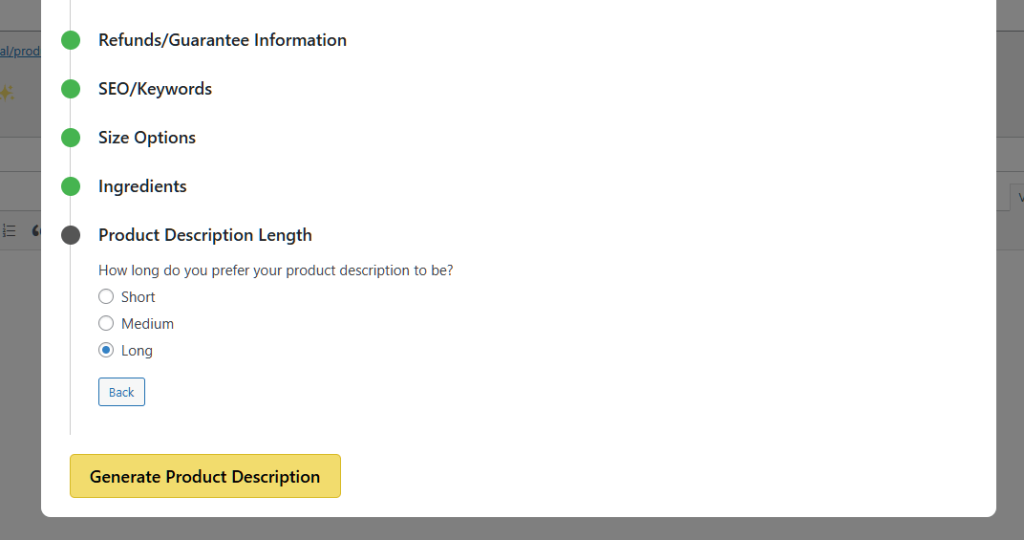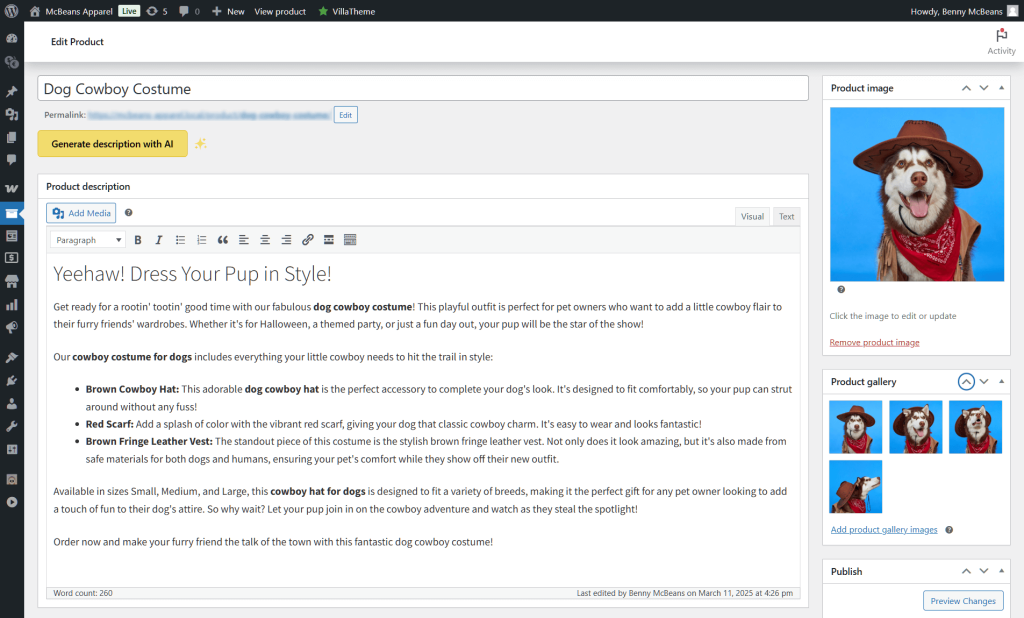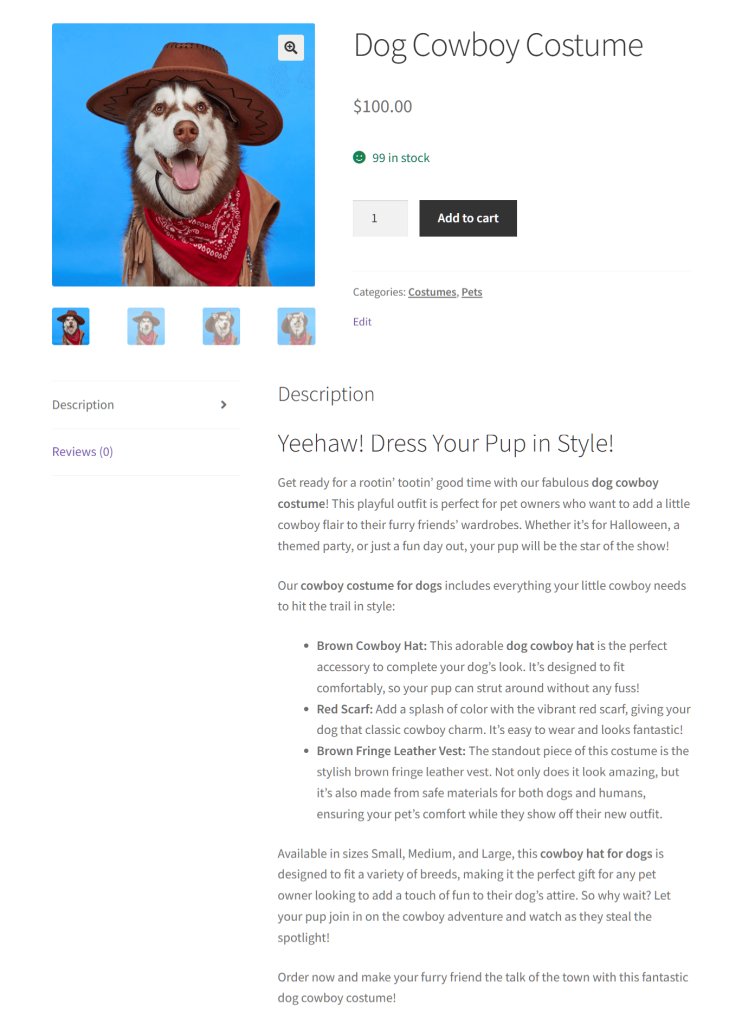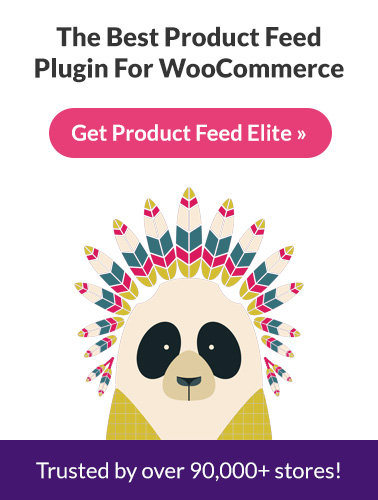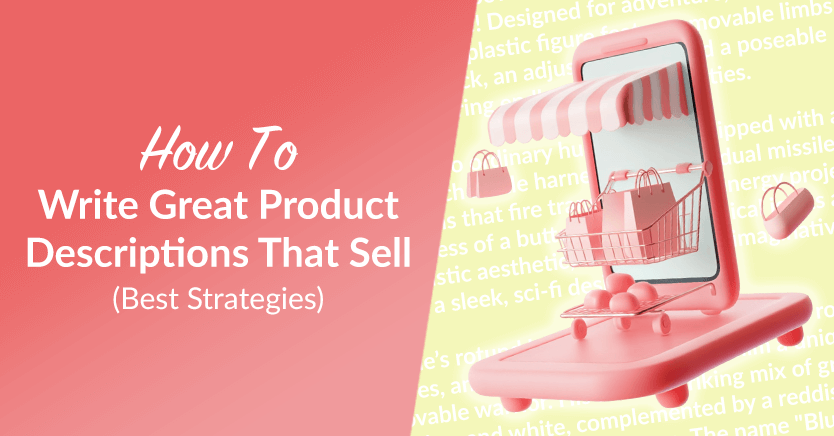
Great product descriptions can make the difference between a sale and a missed opportunity. When you nail a description, it connects with the customer and shows them how the product improves their life, encouraging them to buy.
We’ve seen many WooCommerce store owners overlook how descriptions impact sales and visibility. This is unfortunate, as whether a description is on your site or across sales channels, it can either help you stand out or get lost in the crowd.
This guide will show you how to write product descriptions that capture attention and drive sales. We’ll also discuss how these descriptions work in product feeds to boost your reach across platforms.
Furthermore, we’ll introduce you to a new WooCommerce AI tool that saves you loads of time and effort by automating the generation of compelling product descriptions.
- I. Why Do Product Descriptions Matter In Ecommerce?
- II. How To Craft The Best Product Descriptions
- III. Why Great Product Descriptions Matter For Product Feeds
- IV. Using AI To Craft Great Product Descriptions
- Conclusion
- Frequently Asked Questions
I. Why Do Product Descriptions Matter In Ecommerce?
A product description is the text that explains what a product is and why it’s worth buying. Think of it as your chance to speak directly to the customer.
So, why are product descriptions important to ecommerce store owners? Let’s find out!
1. Customers rely on descriptions to make purchasing decisions
Customers need product descriptions to understand what they’re buying. They want to know how it works, how it benefits them, and if it’s the right fit.
A well-written description helps them picture the product in their life. In our experience, the best descriptions make customers feel confident in their choice.
Without clear descriptions, buyers can feel uncertain and hesitate to purchase.
2. Search engines and marketplaces use descriptions to rank products
Search engines like Google and marketplaces like Wish use product descriptions to help sort and rank listings. The more detailed and relevant your description, the higher the chance of your product appearing in search results.
When you use the right keywords and provide useful details, it’s like giving search engines a map to your product. Thus, products with clear and well-optimized descriptions are far more likely to show up in front of potential buyers.
3. A weak description can cause hesitation, while a strong one builds trust
A weak description leaves too many questions unanswered, and customers might hesitate before clicking the “buy” button. They could wonder if the product will meet their expectations or if the seller is trustworthy.
On the other hand, a strong description gives all the details a shopper needs. It answers common questions and highlights why the product is worth the investment.
Remember, customers are more likely to purchase from stores that clearly communicate value through strong product descriptions.
II. How To Craft The Best Product Descriptions
Crafting great product descriptions is an art that can significantly boost sales. The key to writing such descriptions is understanding your audience.
Different shoppers care about different details. Some may want to know about the quality of the materials, while others might focus on how it fits into their lifestyle.
Matching the tone and language to what your customers expect can make a huge difference. For example, if you’re selling luxury items, a more formal tone may feel right. However, if you’re selling casual wear or tech gadgets, a friendly, approachable tone might work better.

Now, let’s break down how to create descriptions that drive conversions and grab attention.
1. Focus on benefits, not just features
A good product description focuses on benefits, not just features. Features provide facts, but benefits show how those facts improve a customer’s life. For example, instead of saying “100% cotton,” explain how it feels soft against the skin and lasts longer after multiple washes.
When describing a product, consider how it fits into the customer’s daily life. A watch with a long-lasting battery isn’t just about its specs; it’s about the convenience of not needing to charge it every night. Help customers picture how it improves their routine.
We’ve found that customers are more likely to buy when they can imagine the product in their lives. Focusing on the product’s benefits creates that connection and shows real value.
Example:
Product: Wireless Headphones
Description: Block out noise and enjoy your music with advanced noise-canceling technology. The soft ear cups provide hours of comfort, while the 30-hour battery keeps you ready for anything. These headphones make every moment more enjoyable and hassle-free.
2. Use keywords naturally
Using the right keywords is essential to making your offerings easy to find. However, packing a product description with too many keywords can make it awkward. It’s all about balance. Keywords should fit naturally.
Think like a shopper. What words would they search for? For a kitchen blender, terms like “powerful,” “easy to clean,” or “durable” work well. Using these in the right spots makes your product easier to discover.
Aim for smooth integration. Keywords should feel like a natural part of the product story, not forced. A well-placed keyword guides the customer and keeps them engaged.
Example:
Product: Stainless Steel Blender
Keyword: stainless steel blender
Description: This stainless steel blender makes smoothie-making fast and easy. Its durable blades handle tough ingredients, delivering smooth, creamy drinks in seconds. With an easy-to-clean design and a sleek, modern look, it fits perfectly in any kitchen. Built to last, this blender is perfect for blending fruits, vegetables, or ice.

3. Keep it clear and engaging
Clarity is key when writing an effective product description. Therefore, avoid jargon or complex sentences. Remember, simple language helps customers understand your product quickly.
Write like you’re talking to a friend: clear and direct. This keeps it conversational and approachable. Also, break up the text into short paragraphs or bullet points to make it easier for customers to scan and find the key details.
When customers can quickly understand the description, they’re more likely to stay engaged and make a purchase.
Example:
Product: Luxury Scented Candle
Description: Transform your space with the soothing aroma of this luxury scented candle. It fills the room with a calming fragrance that lasts for hours. The smooth, even burn ensures long-lasting enjoyment, while the sleek design adds a touch of elegance to any room. Perfect for creating cozy moments or setting the mood for relaxation.
4. Address pain points and objections
Customers often hesitate because of concerns like price, durability, or fit. From our experience, addressing these issues in your descriptions can ease their worries.
For instance, if you’re selling a small jacket small, mention it upfront. This builds trust by setting the right expectations.
So, should a product description include such details? Yes! Doing so shows you understand your customers’ needs, making them more confident in their purchase.
Example:
Product: Leather Jacket
Description: This leather jacket offers a stylish fit, but it runs slightly small. If you’re between sizes, we recommend sizing up for a more comfortable fit. Made from high-quality leather, it’s built to last and soften over time, giving you both durability and comfort. Though the price reflects the quality, it’s an investment piece that will hold up through years of wear.

5. Highlight unique selling points
A product’s unique selling point (USP) is what makes it stand out. It could be a feature, design, or function that sets it apart from competitors. Thus, to attract attention, highlight product details that make your product different.
For example, if you’re selling a reusable water bottle, mention how it keeps drinks cold for 24 hours. This feature could be a big draw for people needing a bottle that lasts through long days or outdoor activities.
When customers see what makes your product special, they’re more likely to connect with it. Make it clear and easy for them to understand why it’s the best option for their needs.
Example:
Product: Insulated Travel Mug
Description: This travel mug keeps your drinks hot for up to 12 hours and cold for 24. Its leak-proof lid and one-handed operation make it perfect for on-the-go convenience. Unlike other mugs, the double-wall insulation ensures your beverage stays at the right temperature, no matter how long your commute is.
6. Be descriptive and specific
Vague phrases leave customers unsure, while precise details paint a clear picture. Thus, when you focus on specifics, you bring the product to life in the customer’s mind.
When writing product descriptions, include key details like size, color, and key features. For instance, instead of saying “durable material,” mention the exact material, like “premium stainless steel” or “high-quality leather.” From our observation, the more specific you are, the more confident customers feel about their purchase.
Also, describing how the product can be used in different situations is key. A water bottle isn’t just a bottle; it keeps drinks cold for 24 hours, whether at the gym, the office, or on a hike.
Example:
Product: Memory Foam Pillow
Description: This memory foam pillow offers perfect support for your neck and head. The cooling gel keeps you comfortable throughout the night. Its soft, washable cover adds convenience. The ergonomic shape adapts to your sleep position, helping you wake up pain-free and refreshed.

7. Tell a story
Some good product descriptions tell a story that brings your product to life. A well-crafted story helps people connect emotionally.
For instance, instead of just describing a coffee maker, show how it fits into a busy morning. Imagine someone rushing to work, and the coffee maker delivers the perfect cup to power their day.
Stories help customers visualize how the product fits into their lives. It makes the item more memorable and creates a sense of connection, making it something they can’t imagine living without. Keep these pointers in mind whenever you write a product description!
Example:
Product: Reusable Water Bottle
Description: It’s 7 a.m., and Sarah is rushing to catch the bus. She grabs her reusable water bottle off the counter, knowing it will keep her water cold for hours. On the way, she takes a sip and smiles, glad she won’t have to buy an expensive bottle of water. This bottle’s sleek design and leak-proof lid make it the perfect companion for busy mornings and long days at work.
8. Use social proof
Social proof builds trust and influences buying decisions. Positive reviews, ratings, and testimonials reassure customers they’re making the right choice. In fact, 66% of consumers in the US report being “very frequently” or “frequently” motivated by customer reviews when making purchasing decisions.
Highlighting “5-star reviews” or “over 500 satisfied customers” adds credibility. This boosts confidence and helps customers feel secure in their decision.
Personal stories or experiences shared by customers make the product more relatable. Hearing how others benefited can create a connection and encourage a purchase. This explains why some of the best product descriptions use social proof.
Example:
Product: Eco-Friendly Water Bottle
Description: This eco-friendly water bottle has earned 4.8 stars from hundreds of customers. Reviewers love its leak-proof design and long-lasting insulation. “It keeps my drinks cold all day,” one happy customer said. Durable and stylish, it’s a must-have for anyone on the go.
Other considerations
Should product descriptions contain product images?
Yes! Typically, great product descriptions include high-quality images. These images help customers visualize the product, provide context, and build trust. In short, they make the listing more appealing, increasing the likelihood of a purchase.
Generally, you should place product images outside the body of the text in an image gallery or media section for easy browsing. However, a key image, like the primary product photo, can be included within the description to highlight specific features. The key is to maintain readability while ensuring images are easy to navigate.
Last but not least, great product descriptions are easy to read on mobile. These days, most people use their mobile devices to shop. In fact, in 2024, smartphones made up almost 80% of global retail website traffic.
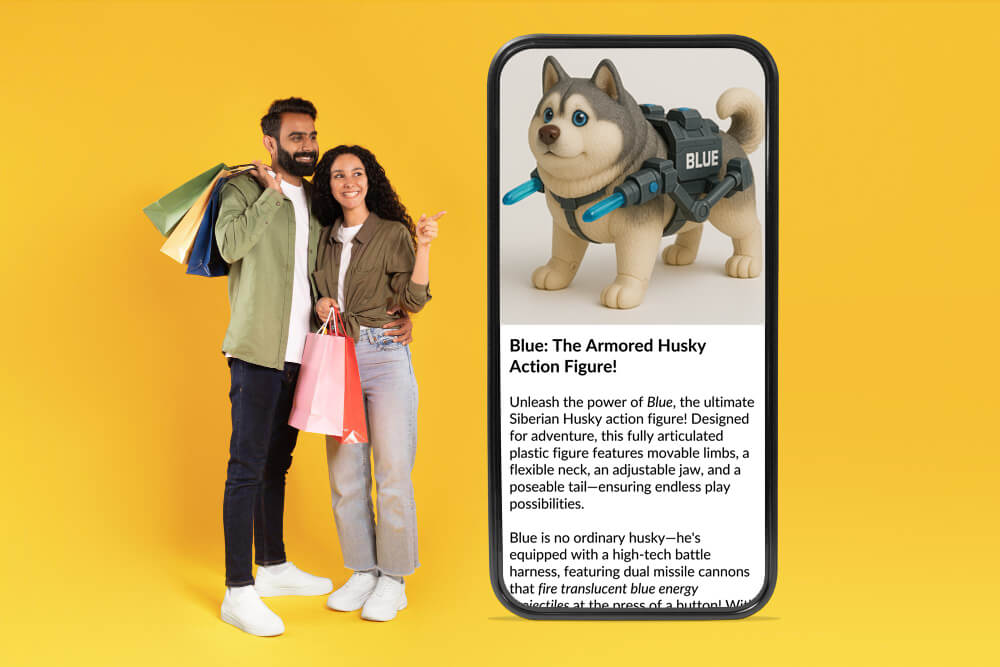
III. Why Great Product Descriptions Matter For Product Feeds
Why limit your WooCommerce store to one audience when your products could be everywhere? Expanding to Google Shopping, Facebook, Bing, and more puts your offerings in front of more buyers, boosting visibility, reach, and sales.
So, what’s the key to selling across multiple channels? Product feeds—data files that streamline multichannel selling, drawing more customers to your ecommerce product pages with ease.
What is a product feed?
A product feed is a file that contains key details about your products, like titles, descriptions, prices, and images. Many ecommerce businesses rely on product feeds to automatically sync their listings across multiple sales channels, ensuring:
- Wider reach and greater visibility, leading to more sales.
- Accurate and up-to-date product details everywhere you sell.

Would you like to know more about product feeds? Then check out our comprehensive guide:
What Is A Product Feed And How Do You Create One? (Ultimate Guide)
Great product descriptions and product feeds
Well-crafted, creative product descriptions play a huge role in making these feeds effective. A clear, engaging description helps listings stand out and encourages more clicks.
Furthermore, marketplaces and advertising platforms often use descriptions to determine relevance, meaning a good product description can improve search rankings and visibility.
Some platforms even prioritize listings with well-written descriptions, pushing them higher in search results. This makes quality descriptions essential for driving traffic and increasing sales. The better the description, the more likely customers are to notice, click, and buy.
An excellent product description attracts attention and ensures consistency across all channels. Whether a customer finds the product on Google Shopping or a Facebook ad, they should see the same compelling details that make them want to purchase.
Keep all this in mind when you create product descriptions and feeds!
IV. Using AI To Craft Great Product Descriptions
If you have hundreds of products, imagine how difficult it would be to write persuasive product descriptions for all of them. All that manual effort will take ages to complete, not to mention it’ll drain you of the energy required to do what matters most: scaling your business.
But what if you can automate the entire process?
This is where StoreAgent, a suite of WooCommerce AI tools, comes in.
One of StoreAgent’s tools, the Product Descriptions AI, writes powerful product descriptions for you.
How StoreAgent’s Product Descriptions AI works
So, how can you use StoreAgent’s Product Descriptions AI to generate great product descriptions?
Simply provide key details through an easy step-by-step process, and let the AI take care of the rest!
The image below shows the options for providing product and description details to the WooCommerce AI product description tool.
For example, what if you want the description to sound friendly, playful, and happy? Simple: just tick the respective checkboxes!
You can specify key product details along with its target audience.
You can also indicate the keywords to include in the description and set the description’s desired length:

Once you’ve selected the product and description details, the AI will generate the product description. You can edit it anytime in the backend.
Here’s how the product description will appear to customers on the public product page:
And that’s how simple and fast it is to generate great product descriptions with StoreAgent’s WooCommerce AI product description tool!
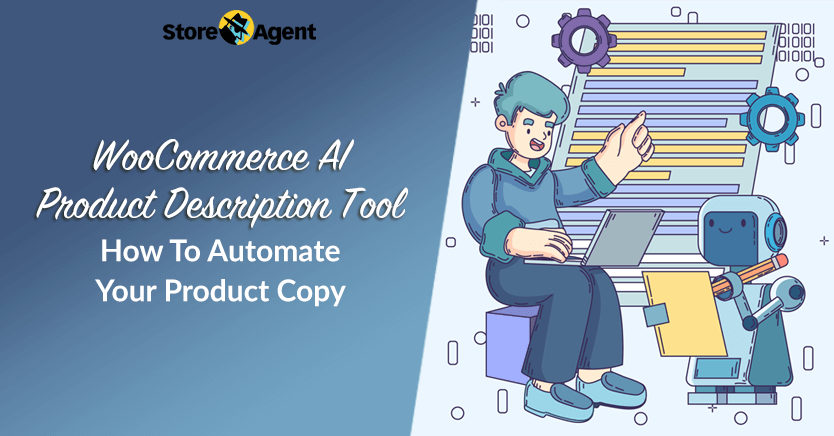
Would you like to know more about StoreAgent’s Product Descriptions AI? Then check out our extensive guide:
WooCommerce AI Product Description Tool: How To Automate Your Product Copy
Conclusion
Great product descriptions are essential for boosting ecommerce visibility and driving more sales. By using the right strategies, you can create descriptions that enhance your reach and convert more customers.
What happens when you combine well-crafted descriptions with product feeds? You improve your ability to sell across multiple channels, such as Google Shopping, Instagram, and more.
And if you have hundreds of products? No problem! StoreAgent can automatically generate captivating AI product descriptions. Thus, it can save you time and let you focus on growing your business.
To summarize, this guide explores the following core concepts:
- Why do product descriptions matter in ecommerce?
- How to craft the best product descriptions
- Why great product descriptions matter for product feeds
- Using AI to write great product descriptions that sell
Do you have questions about product description writing? Let us know in the comments!
Product Descriptions FAQS
What are product descriptions?
Product descriptions are written explanations that highlight a product’s features, benefits, and key details to help customers understand what it is and why they should buy it.
What should a product description include?
Great product descriptions should include key details such as the product features, benefits, materials, dimensions, and unique selling points. They should also address how the product solves a problem or improves the customer’s life.
How do you optimize product descriptions?
To optimize product descriptions, you should:
- Focus on benefits, not just features
- Use keywords naturally
- Keep it clear and engaging
- Address pain points and objections
- Highlight unique selling points
- Tell a story
- Be descriptive and specific
- Use social proof
Also, ensure the descriptions include product images and are easy to read on mobile.
How do you make product descriptions scannable?
To make product descriptions scannable, follow these tips:
- Use bullet points: Break down key features and benefits into easy-to-read bullet points.
- Short paragraphs: Keep paragraphs short, ideally two to three sentences, so readers can quickly digest information.
- Headings and subheadings: Use headings to categorize different sections, like features, benefits, and specifications, making it easier to navigate.
- Highlight key details: Bold or italicize important points (but avoid overdoing it) to draw attention to crucial information.
- Use clear, simple language: Avoid jargon and keep sentences straightforward to ensure clarity.
- Include visuals: Images or icons alongside descriptions can help break up text and provide context quickly.
- Use white space: Ensure there’s enough spacing between text blocks to avoid clutter, making the content more inviting to read.
